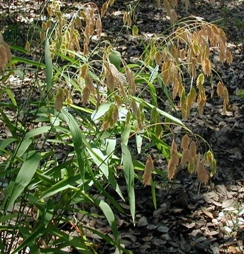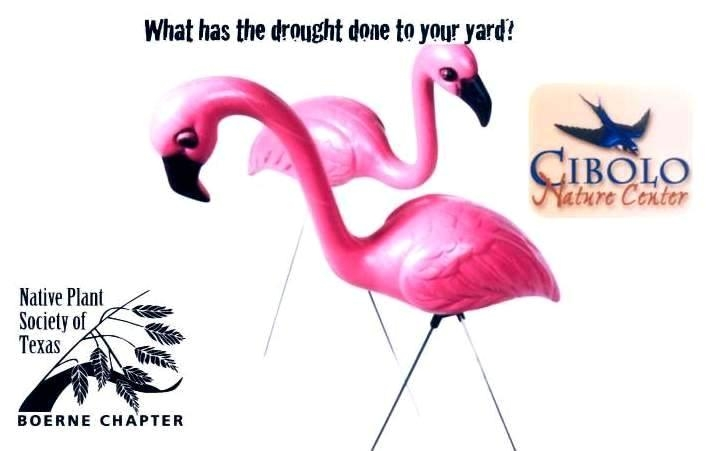Author: Bill Ward
A recent report from the Office of the State Climatologist states that for our part of Central Texas, “the intensity of the 2009 drought is greater than that of most but not all of the major historical droughts of the past 110 years.” No surprise; it’s been miserable this summer!
Once this drought goes away, we can bet on one sure thing. Another one will come too soon. Extreme wet and dry periods occur every three to five years, according to UT-Austin’s Dr. David Hillis, who analyzed rainfall over the last 60 years on a ranch in Mason County. He found that the wet-dry cycles in Central Texas, caused by fluctuations in temperature of the Pacific Ocean, are fairly regular.

This means we have to live with frequent droughts as a normal part of Hill Country life. That might not be so bad except for the fact that available water in Central Texas is continually decreasing, no matter what the climatic cycle, because the population is continually increasing. It seems inevitable that there will be less and less water for irrigation.
If in the future there will be little or no water for outside watering, how should we landscape our yards? With native plants, of course, but not even all the native plants are surviving this recent drought. This morning I took a walk around our yard to see what plants are still green, despite their long, hot summer with little or no watering.
I was pleasantly surprised how many different species of our well-established plants still look pretty good. All of these plants survived this exceptional drought and also the extraordinary wet spell of 2007. These plants are the ones for those future gardens that will have to survive without irrigation, no matter what the rainfall cycle.
Among the larger trees in our yard, the live oak, red oak, hackberry, and cedar elm are stressed, but holding up fairly well. Smaller native trees and shrubs that remain green and unwithered despite no watering are Vasey oak, Texas persimmon, desert willow, flame-leaf sumac, evergreen sumac, aromatic sumac, madrone, Anacacho orchid tree, Mexican buckeye, cenizo, pink mimosa, coral berry, retama, huisache, guajillo, catclaw acacia, smoke tree, soapberry, Mexican silktassel, Texas redbud, Texas mulberry, Texas mountain laurel, agarita, Lindheimer senna, possumhaw, goldenball leadtree, kidneywood, prickly ash, and wafer ash.
Others that are still green after only one or two waterings all year are Eve’s necklace, bigtooth maple, Lacey oak, chinkapin oak, Texas ash, rough-leaf dogwood, Carolina buckthorn, black dalea, Texas milkweed, Barbados cherry, pigeon berry, and esperanza. The last five of these even bloomed lately.
As much as I like the various salvias, I have to admit that the only one that hasn’t shriveled in the heat is Salvia greggi, our only salvia blooming this month.
As expected, two kinds of nolina, sotol, twist-leaf yucca, Buckley’s yucca, and various agaves and cactuses are surviving without noticeable stress.
Grasses are having a hard time, but one ornamental grass that is proving to be exceptionally drought tolerant, at least in our yard, is inland seaoats (okay, these days I’m supposed to call it broadleaf woodoaks).
And what about Ashe juniper? Maybe we ought to think about “mountain cedar” (at least the pollen-free female) as a landscape plant for the future. It’s not a bad-looking evergreen, and it grows without being watered at all.
2009 Tour of Yards, September 26

The Boerne Chapter of the Native Plant Society of Texas is again joining with the Cibolo Nature Center to host a fall tour of yards on Saturday, September 26 from 9 AM-1 PM. Admission is free.
This year’s tour will be different. The yards will feature maintenance-free natural landscapes on property ranging from 2 to 50 acres. These property owners have landscaped near the house, but kept most of their “yards” in the natural state.
Yards open to visitors are one in the Spanish Pass area north of Boerne, two in Cordillera, one in River Mountain Ranch northwest of Boerne, and one in Fair Oaks Ranch. The directions and property descriptions will be available beginning September 22 at the Cibolo Nature Center and at www.www.npsot.org/boerne.
These properties include spring-fed canyon streams lined with cypress and palmetto as well as high hills with ancient smoke trees and madrones. This is an opportunity to walk private land to see the beauty and resilience of the Hill Country natural landscape.
